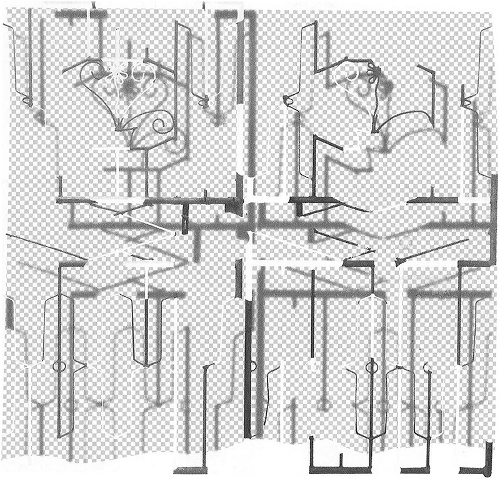
Magician Space is pleased to present the gallery’s first exhibition by Liu Chuang. The exhibition features a video, BBR1 (No.1 Blossom Bud Restrainer) No.2(2015), which is displayed alongside a series of sculpture and installation work.
‘Live Remnants’ looks closely at the traits shared amongst objects and patterns, with a particular focus towards how their variants resurrect by adapting from the remnants of their vestigial past. Known for his critical projects engaging at the borders of the social, economic, and urban realities of contemporary China, the exhibition charts a manifold understanding of the systems underlying the everyday. Liu Chuang’s expansive methodology traces the discernible contours of an object or network of information, analysing the clues impressed within a pattern’s evolution through time, and tracing their capacity to shift form in relation to the material conditions they emerge from.
As a prelude of sorts, ‘What is a Screen?’ hovers initsfunctioning as a screen near to the entrance of the space. A ‘Fang Sheng’ motif of ancient origin finds itself embedded at its weave between the geometrical structure of modern architecture and the technological capacities of welded iron. The pattern itself bears characteristics mirroring a resilient instinct so often found in the survival behaviour of micro-organisms – of an innate capacity to re-generate variations of itself across different carriers and surfaces through time: historic variants can be found intertwined within weaves of cloth in the Liao Dynasty, the backs of copper mirrors in Song Dynasty, to even the paper fold of a love letter. Re-animating the pattern further, projected light is combined with an artificial breeze, causing a suspended sheet of gridded gauze to create a moving ‘photogram’ effect behind the structure. Thetransformablenascent properties of these mechanisms become activated as to provide segmented layers of patterns, a screen to a ‘landscape’ that explores a liminal space between image and its material artifice.
Modern urban planning becomes effective in assimilating itself within the self-propagating system of plants. Enhancing the functionality of Poplar and Willow trees within the urban landscape through selective cultivation – an unexpected phenomenon materialises in the form of seasonal snowfall. The video BBR1 (No.1 Blossom Bud Restrainer) No.2 pulls together a collage of found-footage such as viral films recorded on mobile phones dispersed across the Internet, tracing the public capture of this ephemeral event. Extending this topographical terrain outwards, an accompanying series of documents and objects are displayed to activate different areas of the exhibition space. A display device contains an accumulation of catkin cotton integrated into a cyclical system simulating the suspension of their fibre in flight; diaristic traces found in pulp fiction books allude to a proto-internet network of anonymous communication, graphed directly onto the wall; and a series of lights hanging from the ceiling, modified using ancient and modern vessels, flicker between alternating pulses of light, in an equilibrium working between its aesthetic and functional properties.
Modernity at this conjuncture is considered more expansively here than merely activity confined to human subjects: but rather as a generative ecology defined by permeable lines separating organism, inorganic matter, and structural mechanisms. An event like the Blossom Bud Restrainer project is a good example: a variation occurring between Willow and Cotton, which suddenly finds itself resurrected in the falling of snow. ‘Live Remnants’ speaks of an active and uncontrollable dynamic operating within the landscape of a modern city – a way of moving going far beyond the anticipation of human intention and desire.
About the artist
Liu Chuang (b. 1978, Hubei Province) currently lives and works in Beijing. Major exhibitions include solo exhibitions at Magician Space, Beijing (2015); Taikang Art Space, Beijing (2014); Kunsthall Stavanger, Stavanger (2014); Salon 94 Freemans, New York (2014); and Leo Xu Projects, Shanghai (2012). Major group institutional exhibitions include 10th Shanghai Biennale curated by Anselm Frank, Shanghai (2014); 10th Gwangju Biennale: Burning Down the House, Gwangju (2014); Tampa Museum of Art, Tampa (2014); Rubell Family Collection, Miami (2013); UCCA, Beijing (2013); White chapel Gallery, London (2012); Parasite, Hong Kong (2012); Minsheng Museum, Shanghai (2011); China Power Station, Pinacoteca Agnelli, Turin (2010); New Museum of Contemporary Art, New York (2009); Astrup Fearnley Museum of Modern Art, Oslo (2007); 5th Shenzhen International Exhibition, Shenzhen (2003).
About the exhibition
Date: Oct. 27 - Dec. 6, 2015
Venue: Magician Space
Courtesy of the artist and Magician Space.




























